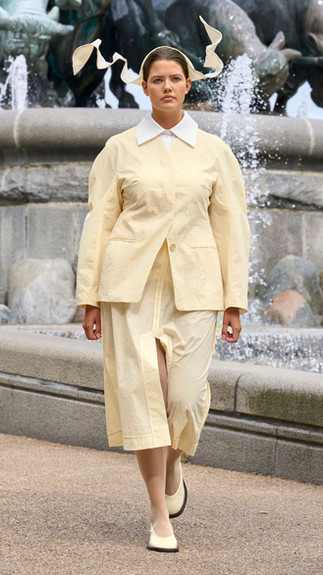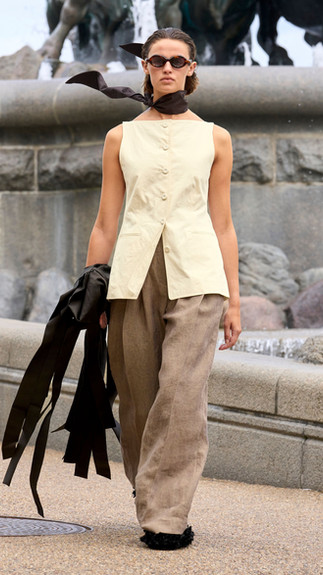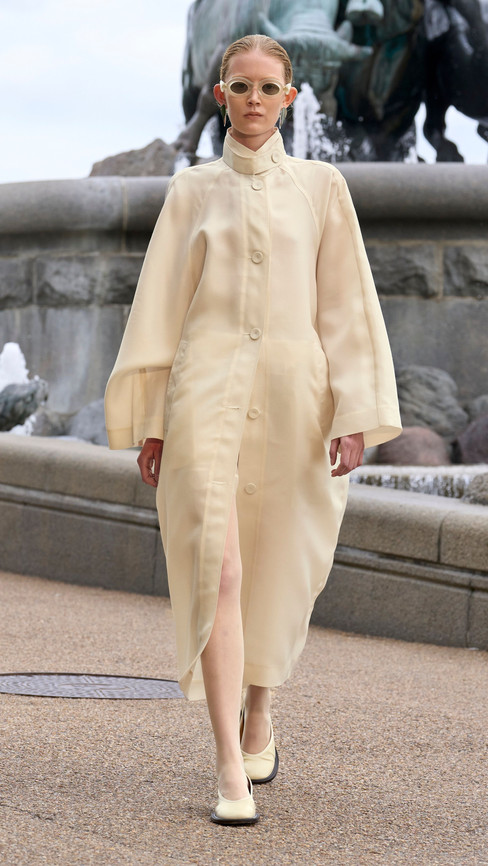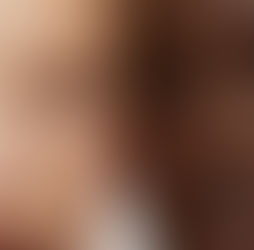MKDT Studio Spring 2026: Threads of Reconnection at Copenhagen Fashion Week
- BY SASHA-LEIGH HODGEN

- Aug 14
- 3 min read
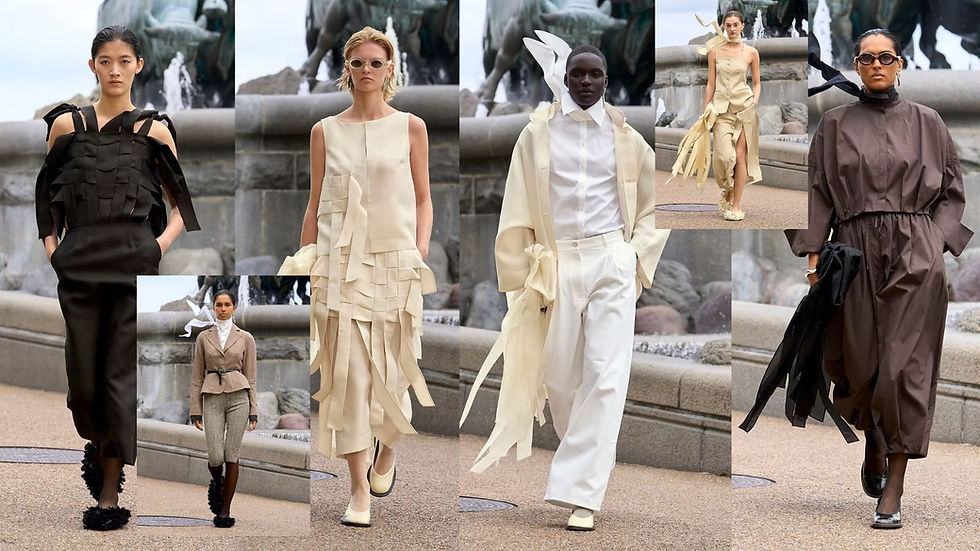
Copenhagen Fashion Week has built its reputation on merging concepts with wearability, and Caroline Engelgaar’s Spring 2026 collection for MKDT Studio was a perfect example of that philosophy in motion. This season, Engelgaar set out to explore “reconnection” not only between people but between periods, artistic disciplines, and even between us and the garments we wear.
The idea drew from two distinct yet connected influences: American surrealist painter Kay Sage, whose work is steeped in a sense of reflective stillness, and Paris-based Jean Jacques Balzac, an artist known for AI-generated “wrong architecture” illustrations that distort the familiar into the futuristic.
The result was a collection that straddled these two worlds, one foot in the past, one in the future, brought together by the literal and metaphorical act of weaving.
The runway unfolded in a palette of butter yellows, baby lemon tones, soft pistachio greens, deep blacks, earthy khakis, and hints of rich chocolate brown. It was a soothing yet sharp color story that grounded the show’s conceptual layers. It was a palette that softened the edges of the conceptual framework, grounding it in tones that feel approachable yet quietly commanding.
The choice of fabrics echoed this interplay. Lightweight windbreaker polyamides offered a technical, almost utilitarian energy, while fine cotton knits and crisp cotton shirting balanced with softness and ease. Linen-suiting blends and trench coat-weight fabrics gave structure and form, allowing Engelgaar to transition seamlessly between airy movement and sculpted tailoring. Trench coat fabrics appeared in structured outerwear, providing a tactile contrast to the collection’s soft, woven texture.
If Spring 2026 had a signature MKDT code, it was weaving. Engelgaar translated the concept of reconnection into garments where strips of fabric interlaced to form bodices, sleeves, and panels, some tightly bound, others trailing with deliberate looseness.
On dresses, woven panels cascaded into ribbon-like fringes that moved with the model’s stride, while on tops, basket-like grids framed bare shoulders, creating a sculptural play between exposure and coverage.
The weaving extended into accessories, with fold-over clutch bags and long ribboned carryalls that became animated in the wind, turning practicality into performance and subtly hinting at the theme of reconnection, threads pulling disparate parts together. This tactile detail was more than surface decoration; it was an architectural device, breaking up the clean planes of the tailoring and adding dimensionality to even the simplest shapes.
For all the woven craftwork, Engelgaar didn’t stray from MKDT Studio’s tailoring DNA. Blazers came with straight, high-neck collars and precise shoulders, often worn with cropped trousers or long, pencil-slim skirts. Sleeveless shirts peeked from under dresses and knits, creating layered looks that felt deliberate but not overworked.
Knitted slip dresses were stripped back yet sensual, the kind of piece that can exist both in the city and on a coastal evening. Trench-inspired jackets, meanwhile, came in both full-length and abbreviated cuts, pairing the drama of outerwear with the lightness needed for spring.
However, one standout iteration was the rounded-shoulder suit jacket. This silhouette softened the formality of traditional tailoring while still commanding a presence. The curved construction gave the jackets a sculptural, almost cocooning quality, making them feel both modern and approachable.
The accessories were integral to the collection’s storytelling. Silk neck scarves in tonal shades, sometimes tightly knotted, other times loosely draped, reinforced the idea of connection and touch. Stocking socks in black or buttery yellow were styled with a range of footwear: rounded ballet flats, low block-heeled pumps, and fringed shoes made in collaboration with Paris-based shoe label Calla. The latter, constructed from deadstock fabrics, nodded to both craft and sustainability and doubled as a quiet protest against fashion waste, a recurring thread in Engelgaar’s work.
Texture played a central role in building depth across the collection. Smooth trench coat fabrics were set against the gentle irregularity of linen, while glossy polyamides rubbed shoulders with matte knits. 3D-printed textiles appeared as experimental inserts, pushing the conversation toward the future. Raw edges, exposed seams, and visible stitching hinted at the idea of garments as living objects, capable of holding memory and history.
Compared to previous MKDT Studio seasons, Spring 2026 carried a more unpolished spirit. This was intentional, a rejection of over-refinement in favor of garments that feel tactile, human, and in motion. Engelgaar’s vision was less about perfection and more about presence: clothes that bear the mark of the maker, the wearer, and the moment.
In an era where fashion often chases novelty at the expense of meaning, MKDT Studio offered a reminder that clothes can be both forward-thinking and deeply connected to tradition. By marrying the woven craft techniques of the past with the speculative possibilities of the future, Engelgaar created a Spring 2026 collection that felt grounded yet expansive.
It was a show about threads, not only those that bind fabric together, but those that connect us to each other, to our histories, and the possibilities ahead.












